Building of the Day: 777 Classson Avenue
Brooklyn, one building at a time. Name: St. Teresa of Avila Catholic Church Address: 777 Classon Avenue Cross Streets: Corner Sterling Place Neighborhood: Crow Hill section of Crown Heights North Year Built: begun 1874, finished 1905 Architectural Style: Romanesque Architect: Unknown Landmarked: No The story: Brooklyn has a lot of Catholic Churches, pretty much all…
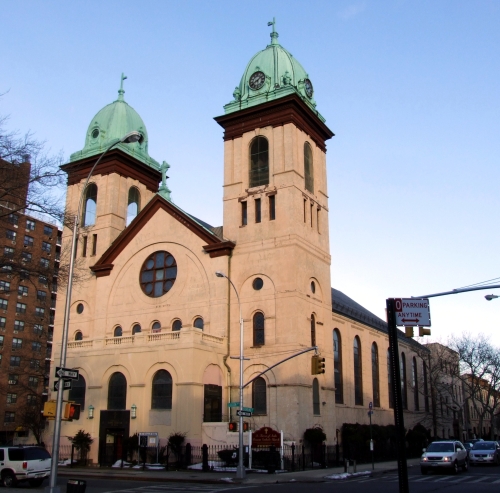
Brooklyn, one building at a time.
Name: St. Teresa of Avila Catholic Church
Address: 777 Classon Avenue
Cross Streets: Corner Sterling Place
Neighborhood: Crow Hill section of Crown Heights North
Year Built: begun 1874, finished 1905
Architectural Style: Romanesque
Architect: Unknown
Landmarked: No
The story: Brooklyn has a lot of Catholic Churches, pretty much all of them extremely fine buildings, and the story of the Church’s expansion across the borough is the story of immigration to our shores. European Catholics who settled here in the second half of the 19th century were a varied lot, but when it came to building churches, the majority of those in northern and central Brooklyn were built by and for the Germans, in the north, and the Irish, throughout central Brooklyn.
Brooklyn’s most well-known Catholic clergyman was Irish-born Bishop John Laughlin, who became the first Bishop of Brooklyn in 1853, and was head of all of Brooklyn’s Catholics until 1891. In the 38 years that he headed Brooklyn’s church, he authorized the building of 125 churches and chapels. St. Teresa’s came in the middle of his tenure.
Brooklyn’s Irish population grew by the thousands mid-century and later, as the economic devastation following the Potato Famine earlier in the century brought millions to these shores. They came to Brooklyn to escape the crowding of Manhattan’s tenements, but also for work, in the city’s factories, homes, and docks, and as civil service workers with the police and fire services. The Church bound the communities together, and as the population grew stronger and wealthier, the call for more churches made new parishes a booming industry.
St. Teresa of Avila parish was ordered by Bishop Laughlin in 1874. The first services were held in the parlor of a Mr. D. Gallagher, who lived at 685 Butler St. (Sterling Place was originally Butler St.) 150 people crowded into the house to attend mass. The cornerstone for this church was laid three months later, and soon mass was celebrated in the lower church basement, as the upper church continued to be built. The church was not dedicated until 1887. During that time, a school and convent were also built, both of which opened in 1883.
It had always been the plan for the church to have twin towers that rose over this middle-class row house neighborhood, but they were not finished until 1905. From photographs, it appears the right hand tower always had clock faces, but the left held the carillon of ten bells. They were cast in a foundry in Troy, NY, and each had the name of an Irish saint inscribed on it. The rectory was built in 1913. I have not been able to find a record of the architect(s) of any of the buildings.
St. Teresa’s church, school, convent and rectory buildings still stand. The parish is much diminished over the years, as the Irish who founded it are long gone, replaced by Italians, replaced by black and Hispanic people. The school closed in 2002, and lay abandoned, but the building was just recently taken over by Brooklyn Jesuit Prep School, which opened in 2006, moving here more recently. The convent building was long ago turned into a senior citizen home. Like most churches, St. Teresa’s is in need of funding for both visible and unseen repairs, but here’s hoping this church, which is one of the neighborhood’s most striking landmarks, is preserved, protected and stays open for the people of this part of Crown Heights. GMAP
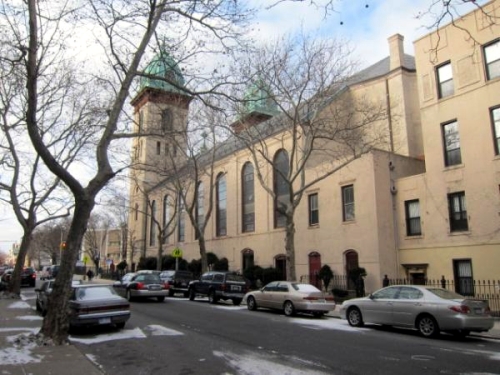
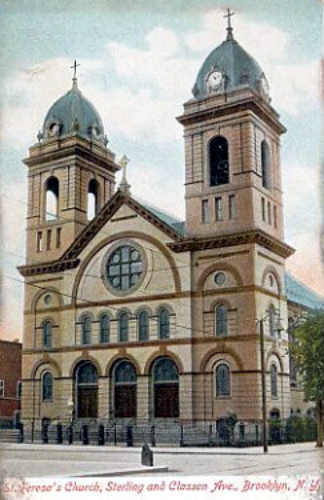
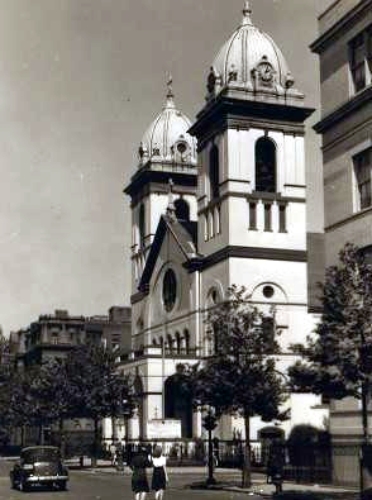


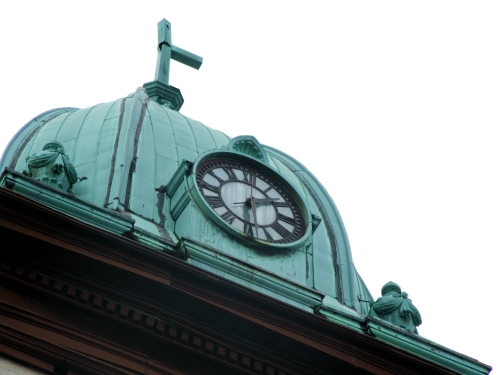




Those green helmets are Germanic looking, or at least Mitteleuropaische.
Makes me think it is St Therese of Lisieaux (little flower). As opposed to St Teresa of Avila (ecstatic visions) as in, waiter, I’m having what she’s having.
This is a very nice church.
The green copper helmets on the towers remind me of the main building on Ellis Island.
The AIA Guide lists it as St Theresa’s (as opposed to Teresa of Avila)